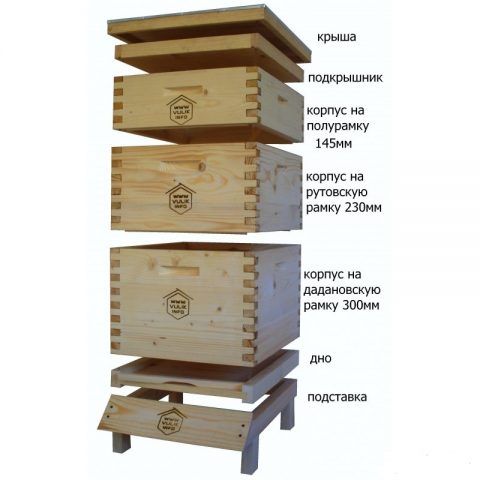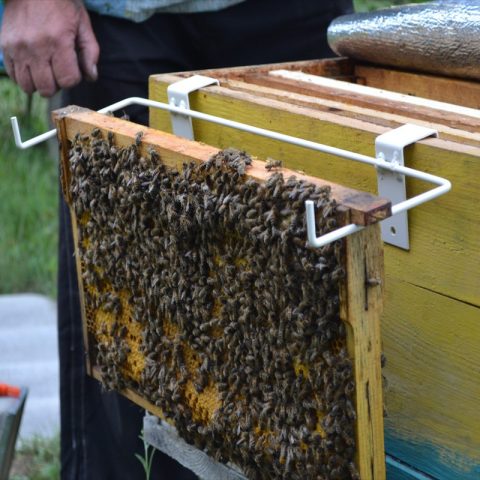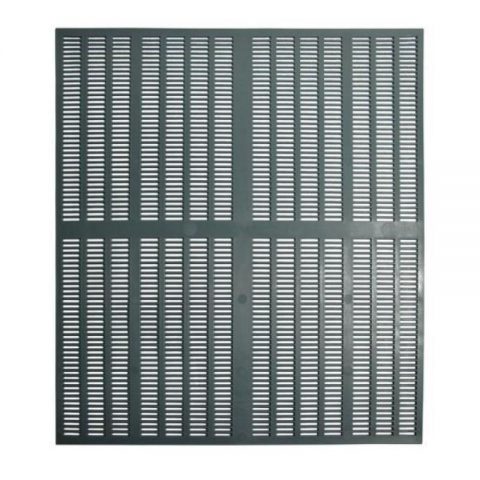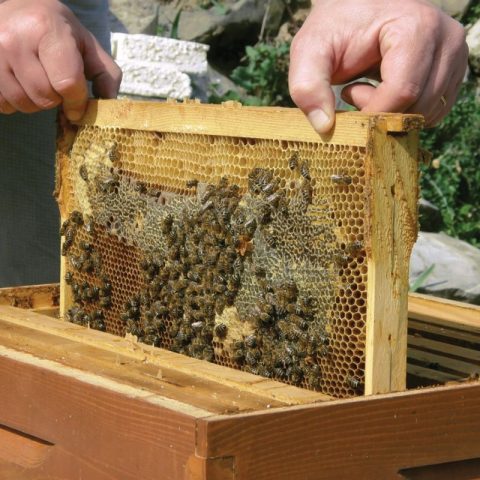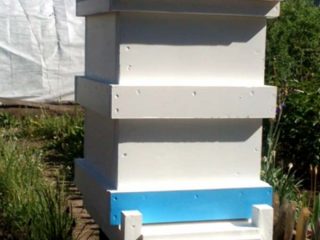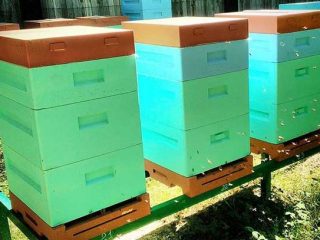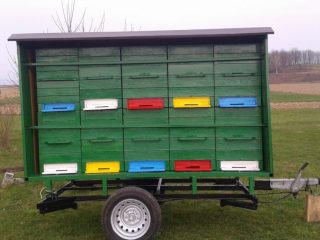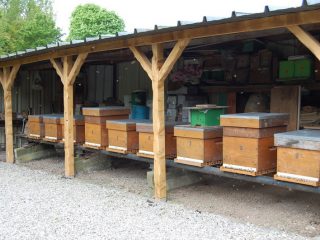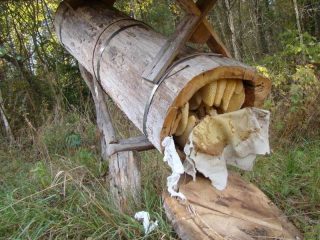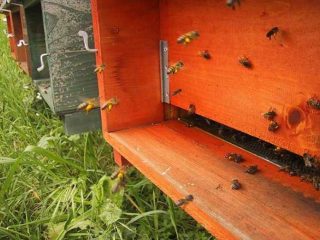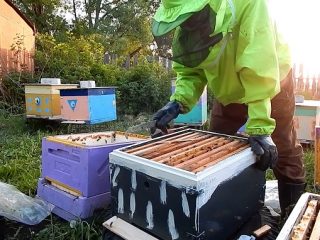Content
Today, double-house keeping of bees is practiced by many beekeepers. A double-hull hive, or as it is sometimes also called, a Dadanovsky double-hull hive, consists of two compartments or buildings. The lower one has a non-removable bottom and roof. The second body does not have a bottom; it is placed on top of the first. Thus, it is possible to achieve a 2-fold increase in the volume of the hive.
How does a double-hull hive work?
A standard two-body hive with 12 frames has the following design features:
- Single walls. Their thickness is approximately 45 mm.
- Removable bottom makes it easier to swap bodies.
- A liner designed for laying the insulation of a hive.
- Upper, additional, tapholes - 1 pc. for each case. They are made in the form of round holes with a diameter of approximately 25 mm. Arrival slats are attached under the entrances.
- A flat roof equipped with several ventilation valves and several flight boards.
- Flight boards of the upper and lower entrances.They are installed vertically (for example, during transportation of hives) close to the walls and cover the entrances.
Advantages and disadvantages
A double-hull hive has the following advantages:
- Bee colonies reproduce better, since the conditions of keeping bees in a two-hull hive with 12 frames stimulate the queen to intensively lay eggs.
- A family in a hive of this design will swarm less.
- Honey yield increases by almost 50%.
- It's easier to prepare bees for winter.
- Increases wax yield.
- Bees that were bred in a double hive are usually stronger and have good genes.
Among the disadvantages of double-hull beekeeping, it should be noted, first of all, the large weight of the structure, which is about 45-50 kg, taking into account the frames from which honey will be pumped out. The superstructure will have to be rearranged more than once during the honey collection process, which is physically difficult.
Keeping bees in double hives
The second body is installed on the hive at the moment when at least 8-9 frames with brood appear in the bee colony. If you miss the moment and are late with the installation of the second building, the nest will become crowded, unemployment will increase among the younger generation of bees, and the colony will begin to swarm.
Most often, the second body is installed on the hive about a month before the main honey collection. If the bees have managed to lay queen cells on the honeycombs, there is no point in installing a second building - the insects will not build honeycombs. Destruction of queen cells is a pointless exercise and does not give any results. At the same time, the swarming state of bees continues, and the period of inactivity lengthens.
How to place frames correctly
When keeping bee colonies in two buildings, the frames must be placed in a special order. Several frames (usually 2-3 pieces) containing sealed bee brood are moved into another housing. They are moved along with the bees sitting on them. One structure with brood of different ages is also added. A honey-bread frame is placed on the side, after it those containing brood, then fresh wax and a frame containing a little honey taken from the reserves.
Lastly, a partition and a layer of insulation are installed. The queen moves to the second building and actively lays eggs in empty honeycombs.
As the number of bees in the housing increases, it is necessary to gradually add frames until there are 12 pieces. The bees living in the upper building begin to work actively, building new honeycombs. This is a good time to replenish the supply of sushi on the farm, replacing the newly built honeycombs with fresh foundation. But such manipulations are possible only if the queen has not yet switched to the honeycomb and has not begun to lay eggs in it.
The frames begin to be regrouped just before the honey collection begins. All sealed brood and comb should be transferred to the upper body of the hive. As new brood begins to hatch, the combs will gradually become free for fresh honey. Frames containing open and uneven-aged brood must be moved to the lower housing. You can start moving no earlier than there are 12 frames in the upper case.
Thanks to the arrangement described above, double-house bee housing has become popular.If the structures are not moved in time, the honey frames in the upper building will be located next to the brood, which deprives the double-hull housing of bees of any meaning. During intensive honey collection, you should constantly replace full frames with empty ones. Thus, the bees will be provided with a supply of free space for honey, and the beekeeper will reap a good harvest.
Contents using a separating grid
The separating grid is one of many devices from the beekeeper’s rich arsenal. Its purpose is to prevent the queen and drones from entering certain sectors of the hive. Most often, a separation structure is used when raising queen bees.
The principle of operation of the dividing grid is very simple - the queen and drones are larger than the worker bee, they cannot crawl through the cells, and the bees at this time move freely throughout the hive.
In double-hull hives, the queen should be isolated in the lower part of the hive during the main bribe. To do this, a separating grid is installed between the buildings.
The easiest way to keep
Using this method, you can significantly reduce the beekeeper’s labor costs. After the second body is installed, several frames containing brood of different ages are transferred from the lower section of the hive. Frames with built-up honeycombs are installed in the vacant spaces.
To the frames with brood, which are located in the upper body, add 3 more pieces - with a small amount of honey and one with fresh foundation.They should be separated from the free space of the body using a partition and insulated on top with a pad stuffed with dry moss.
As soon as the bee colony begins to grow, frames are gradually added (up to 6 pieces), placing them next to those where there is brood. The queen moves to the upper body of the hive and begins to lay eggs in empty honeycombs built by worker bees.
How to form a temporary layer with a young queen
The design of a double-hull hive allows you to support bee colonies with two queens. This method significantly strengthens the colony at the time of the main honey flow and prevents swarming. Laying is done only in areas where the honey harvest period begins late, and by this time a lot of bees have bred. Overcrowding causes bees to become idle, lose energy, and swarm. This can be avoided by making layering, since the nest cannot be expanded. Layering is also needed by strong families that are ahead of the rest in their development. The same thing begins to happen to them - they do not have time to reach the main honey collection and form a swarm.
At the moment when all the frames are populated by bees, in order to create a layer, several of them are removed with bees, a young queen and sealed brood. They are moved to another building, and food is placed nearby - frames with honey and beebread. For a 100% result, you can shake bees from another structure into the upper body. The main thing is not to allow the old queen to breed.
The body with the new layer is installed on the hive from which the frames were taken. In this case, the taphole should be placed in the opposite direction from the taphole of the lower body. It is best to transplant the cuttings in the morning, and add the young queen in the afternoon and keep them in isolation for about a day.The uterus is released the next day. Approximately 2 weeks after placement, the young queen begins to intensively sow the honeycomb with eggs. To prevent conflicts between the old and young uterus, a partition is installed between the buildings.
How to connect layering before honey collection
Attaching layering just before honey collection is not an easy task. You can implement it as follows:
- In the housing where the cuttings need to be placed, the honeycombs with honey are replaced with empty ones and placed near the entrance.
- The honeycombs need to be surrounded by a cushion or a diaphragm, and the remaining frames should be removed deep into the body.
- Between the new and old frames a weak partition is made, for example, from an old newspaper.
- In the evening, the frames from one housing are transferred to another, before this the bees need to be sprayed with a weak solution of valerian tincture to give them the same smell.
- Queens should be isolated using caps or cages.
- After this, the bees from the layer will attempt to get to the food and gnaw through the newspaper partition.
This is one of the most optimal ways to attach layering to the main family before the main honey collection.
When to remove bees' second bodies
The second buildings are removed from the hives in the fall, after the bribe is completely finished. This work must be done before the cold weather begins. At the same time, you should note and select honeycombs that are suitable for wintering. After the second buildings are removed after honey collection, the total amount of honey in the hive is recorded on all frames. This allows you to calculate the gross volume of production.Frames heavily clogged with beebread, with very young or too old combs should be removed from the hive. The bees are shaken off them and hidden in a spare box.
If bribes have stopped completely, the bees may start stealing honey. Therefore, it is necessary to dismantle the second buildings from the hives in the evening, after the end of summer, or in the early morning, before it begins.
Conclusion
The double-hull housing of bees allows saving the working energy of insects, while young individuals are fully loaded with work. The population of the hive is placed on a larger number of frames; the bees are not crowded in the nest. All these moments prevent the emergence of the swarm instinct. As a result, bees work more efficiently in a double-hull hive and produce more honey. In addition, the design of a double-hull hive allows you to grow layering next to the main family, which allows you to get a strong honey-bearing family by the time of the main honey harvest.
